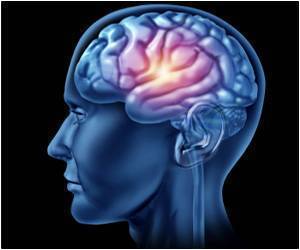A new target in search for therapeutic interventions for Huntington's disease has been discovered by scientists.

Huntington's disease is caused by an unusual type of mutation in a gene that encodes the "huntingtin" protein. These mutations create long stretches of the amino acid glutamine within the protein chain, preventing huntingtin from folding properly and making it more 'sticky'. This causes huntingtin proteins to self-aggregate in both the nucleus and cytoplasm of cells, disrupting multiple aspects of cellular function and ultimately leading to the progressive death of nerve cells.
Nuclear huntingtin aggregates have been found to interfere with the transcription of many genes, and previous work has shown beneficial effects for Huntington's disease of inhibiting a family of enzymes that are normally thought to regulate transcription – the histone deacetylases, or HDACs. However, humans have eleven different HDAC enzymes, and it's been uncertain exactly which HDAC needs to be inhibited to see these benefits.
The new study from Michal Mielcarek, Gillian Bates and colleagues at King's College London has pinpointed just one of these enzymes as the target – HDAC4 – but with an intriguing twist; everything is happening in the cytoplasm, not the nucleus, and HDAC4's classic role in transcription has little to do with it.
The researchers noted that the HDAC4 protein naturally contains a region that, like mutant huntingtin, is rich in the amino acid glutamine. They show that HDAC4 can associate directly with huntingtin protein in a manner that depends on the length of the glutamine tracts, but that this association between HDAC4 and huntingtin occurs in the cytoplasm of nerve cells in the mouse brain, and – surprisingly – not in the nucleus, where HDAC4 is known to have its transcriptional role.
Bates and colleagues did their work in an aggressive disease mouse model of Huntington's disease – the gold standard model for this type of study. They find that halving the levels of HDAC4 in the cells of Huntington's disease mice can delay the aggregation of huntingtin in the cytoplasm, thereby identifying a new route to modulating the toxicity of mutant huntingtin protein. Crucially, reducing HDAC4 levels can also rescue the overall function of nerve cells and their synapses, with corresponding improvements seen in coordination of movement, neurological performance and lifespan of the mice. In agreement with the cytoplasmic association between HDAC4 and huntingtin, this all happens without any obvious improvement in the defective gene transcription in the nucleus.
Advertisement
Source-Eurekalert










